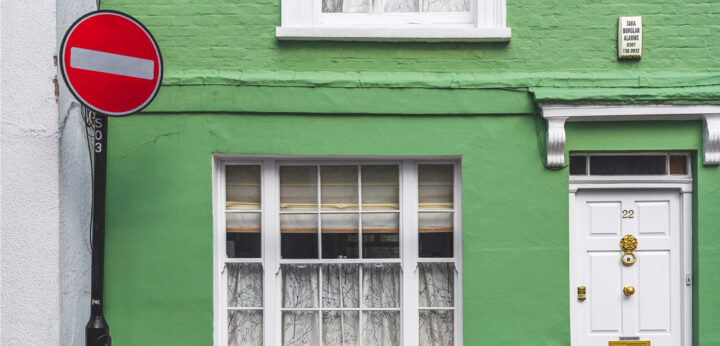Table of Contents
What is loss-of-use coverage?
Loss-of-use coverage, also known as additional living expenses coverage, is the part of your renters insurance that pays for your living expenses if a disaster forces you out of your home and you have to stay somewhere else for a while.
Let’s say your apartment is ravaged by a fire and you have to move out for a few weeks. Your insurance provider will reimburse you for the expenses you incur, such as a hotel stay or restaurant bills, while the damage is being repaired.
What’s included in loss-of-use coverage?
Your policy’s loss-of-use coverage will reimburse you for two types of expenses:
- Additional living expenses
- Fair rental value
1. Additional living expenses
Your additional living expenses are the extra costs associated with temporarily living somewhere other than your home. These usually include hotel fees, but also can include the cost of:
- A short-term rental unit
- Groceries
- Eating in restaurants
- A storage unit
- Gasoline or bus/train tickets (if your commute changes)
- Parking fees
- Boarding your pets
- Laundry
Loss-of-use coverage is meant to allow you to maintain your normal standard of living. Your insurer won’t cover it if you decide to treat yourself to much nicer things than usual, but you don’t necessarily have to pick the cheapest options, either.
Your insurer may ask to see your bank statements or receipts to get an idea of how much you typically spend on groceries, gas, and other necessities.
Renters insurance only covers additional expenses
Note that your provider will only cover your additional expenses — in other words, money that you wouldn’t ordinarily have spent.
For example, let’s say you typically spent $60 on gas per week. If you have a longer commute from your hotel to your office and that increases to $80, your insurer will reimburse you for the additional $20, but not the full $80.
Some auto insurance policies cover loss-of-use
Although your provider will reimburse any additional money you spend on gas, renters insurance never covers your car. If the same disaster that damaged your apartment also wrecked your car, renters insurance won’t pay for repairs or alternate transportation. You’ll have to use your auto insurance’s loss-of-use coverage for that.
Car insurance loss-of-use coverage operates much the same as renters insurance does. If your car is damaged and rendered unfit to drive, your auto insurer will pay for alternate transportation (e.g. bus fare or a rental car) while it’s being repaired.
2. Fair rental value
In addition to your additional living expenses, renters insurance also provides something called fair rental value coverage. This type of coverage will reimburse you for your lost rental income if you’re subletting your unit to another tenant and a disaster renders it uninhabitable.
Fair rental value coverage is fairly niche, and if you’re not subletting your apartment, you’ll never have to use it.
When does renters insurance cover loss-of-use?
Renters insurance provides loss-of-use coverage when your home is rendered uninhabitable by a covered peril, like a fire, a break-in, or certain types of hurricane damage.
There’s no hard definition of what it takes for an apartment to be considered “uninhabitable,” but in general, you qualify if your home has become unsafe, or if staying there would mark a significant decline in your quality of life.
Covered perils
Renters insurance covers most common household disasters, as well as a few not-so-common ones. Common covered perils include:
- Fires
- Gas explosions
- Water damage from burst pipes
- Damage from wind, hail, and snow
- Falling objects (e.g. trees)
- Break-ins (i.e. theft and vandalism)
See our article on what renters insurance covers for a full list of the events that renters insurance provides loss-of-use coverage for.
Also covered: prohibited use
Renters insurance also covers those rare situations when you aren’t legally permitted to stay in your home. This is referred to as prohibited use coverage, and is provided under something called the civil authority clause.
Let’s say a tornado destroys most of your neighborhood, but miraculously leaves your apartment untouched. Your home might be safe to live in, but the rest of the area isn’t, so your local government issues an evacuation order. Your insurer will pay for your expenses until you’re allowed to move back in.
Generally, prohibited use coverage lasts for a maximum of two weeks. Most insurers also only provide it when the disaster forcing the evacuation was a covered peril, such as a wildfire or a tornado.
Sometimes local governments call for evacuations when no actual damage has occurred yet (e.g. because they’re anticipating that there might be a disaster in the next few days). There’s no clear rule that insurers follow in situations like that; they usually handle loss-of-use claims for preemptive evacuation on a case-by-case basis.
When doesn’t renters insurance provide loss-of-use coverage?
Renters insurance doesn’t provide loss-of-use coverage when your home is damaged by an excluded peril.
Unfortunately, standard renters insurance policies exclude several destructive events that can force you to leave your home, including:
- Floods
- Earthquakes
- Pest infestations (like bed bugs)
You can ask your insurer if you can buy an addition to your policy (called an endorsement) to cover those perils. Not all insurers offer endorsements like that, so if you’re concerned, you might need to shop around for a separate insurance policy.
How much loss-of-use coverage do I need?
In standard renters insurance policies, your total loss-of-use coverage is fixed at about 25–30% of your total personal property coverage. Many policies offer around $30,000 in personal property coverage, which means that renters insurance will often cover $8,000 to $9,000 of additional living expenses. (30% of $30,000 is $9,000.)
That’s enough coverage for most people — most disasters won’t keep you out of your home for so long that you’ll spend more than $8,000. If you need more loss-of-use coverage, you can increase it by buying more personal property coverage, but doing so will raise your premiums (the cost of your insurance).
How long does renters insurance cover loss-of-use?
Insurers will usually cover your loss-of-use for the shortest time possible — in other words, however long it takes to repair the damage done to your apartment or to permanently move into a new place, but no longer.
Many insurers also have a 12-month limit, after which they’ll stop paying for additional living expenses. This doesn’t usually matter; it’s very rare for loss-of-use events to last that long, and if one does, you’ll probably exceed the total amount your insurer will pay ($9,000) before you reach the 12-month mark, anyway.
How do I make a loss-of-use claim?
Filing a loss-of-use claim has several time-sensitive steps, so you should start the process as soon as possible.
To file a claim, you have to:
- Notify your landlord
- Document the damage
- Contact your insurer
- List your typical living expenses
- Track your additional living expenses
Step 1: Notify your landlord
Before you do anything else, you need to tell your landlord that there was a disaster in your apartment. They need to know what happened and the extent of the damage so that they can get to work on repairs.
Step 2: Document the damage
Take pictures of your damaged apartment and be ready to provide them to your insurer when you file your claim. If there are any witnesses (including your landlord), you may have to provide their contact information as well.
You should also take stock of your possessions and check whether anything was damaged along with your apartment. If they were, make a list so that you can also submit a property loss claim to your insurer when you contact them.
Step 3: Contact your renters insurance provider
Next, contact your insurance company and start the claim process. Most insurers require you to do this within 48 to 72 hours of the incident.
You can find instructions on your company’s website; many insurers allow you to file claims online, but some require you to call them instead.
When you contact your insurer, you’ll want to have your policy number on hand. Describe the incident as clearly and completely as you can, and provide as much documentation as possible.
If you need to pay for your hotel stay upfront and don’t have the savings to cover it, tell your insurer now. Otherwise, they’ll reimburse you for everything later.
Step 4: List your typical living expenses
Your insurer will ask you to fill out a document detailing your typical weekly living expenses. They’ll use this as a reference so they know how much to pay you.
When you fill out this document, be honest. If your insurer finds out you misrepresented anything, they’ll almost certainly deny your claim, and they might drop you as a client altogether.
Step 5: Track your additional living expenses
Keep track of all of your expenses until you can move back home, including the cost of your hotel room, your food, and transportation. Save all of your receipts — you’ll have to submit these to your insurer before they reimburse you, which they’ll probably do at the end of each week.
Related Questions
- What is guest medical coverage in renters insurance?
- What is a sub-limit in renters insurance?
- Does renters insurance cover home-based businesses?
- Does renters insurance cover gold or silver bullion?
- What does "dependent in the care of" mean in renters insurance?
- Does State Farm renters insurance cover hotel stays?






